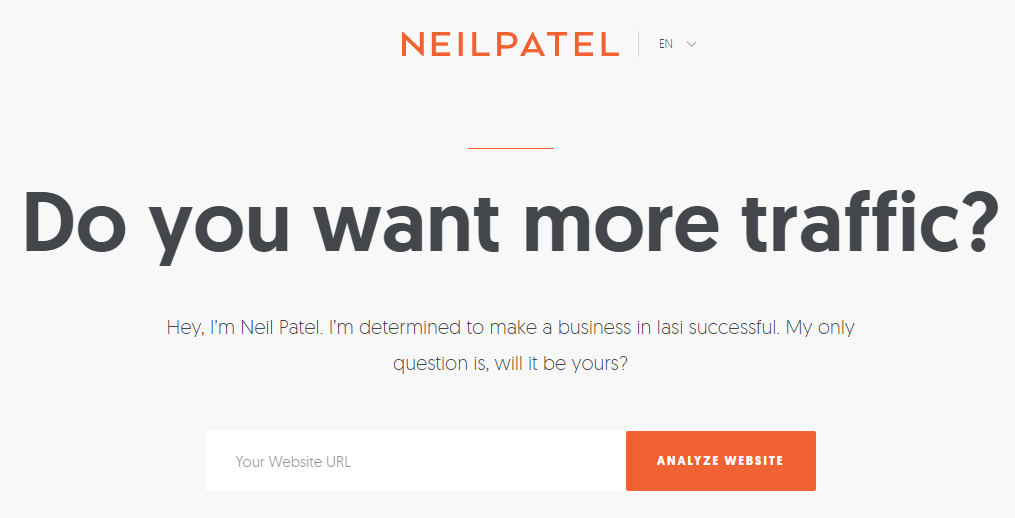Whether you want to gain more subscribers or sell more products, a call to action (CTA) can attract or deter your readers. So, if you want to convince your readers to do something on your page, you must have a compelling call to action. For that reason, knowing how to write a call to action is an essential skill for a marketer.
Although they’re short, calls to action can be tough to write. Remember the 140-character tweets? Unlike today, it was challenging to speak your mind with such a limited number of words (unless you were Hemingway). Similarly, you must be a skilled writer to craft good aphorisms, taglines, mottos, or other short sayings.
But learning a few tips can help you write short and effective calls to action. Here’s how to write a call to action that’s persuasive and effective.
How to Write a Call to Action
1. Set Your Goal
To begin with, what are you trying to achieve with your CTAs? Of course, they should align with your goals. For example, you may want users to request a quote, contact you, subscribe to your newsletter, buy a product, download an eBook, and so on.
Consequently, write your CTA copy based on the goals you want to reach. This is where learning how to write a call to action gets a bit more complicated. At first, writing short, compelling copy that persuades users to do something is never easy. But read on to learn more.
2. Highlight the Benefits
When creating your copy, choose your words wisely. Although it’s important to use strong verbs, avoid generic phrases like “Buy now” or “Submit.” These are overused and don’t highlight the true benefits of your offerings. Also, they don’t connect with your audience on a more personal level.
For more impactful CTAs, use personalized copy that spells out what your readers will gain. For example, instead of saying “Buy Now,” entice your followers with a more specific copy like “Add to Cart – Save 20% Today.” This construction gives readers a better reason to take the desired action.
Furthermore, be aware that sometimes a simple word switch can make a big difference. Let’s compare “order” and “get.” The former emphasizes that the company benefits from the reader’s order. It also implies that the user will spend money on something. On the other hand, “get” highlights the reader’s benefit and puts less focus on the money aspect.
Remember, your goal is to provide value to customers first. Users are much more likely to convert if your text aligns with the benefits.

3. Use Fewer Adverbs
Adverbs are frowned-upon in many writing forms, not just CTAs. That’s because you can use more nuanced or descriptive verbs to express an idea – without resorting to adverbs, which are verb modifiers.
According to HubSpot’s Science of Social Media research, adverbs are the part of speech that gets the fewest shares on Twitter. So if you have to use them in your writing and CTAs, use them sparingly.
4. Get Creative
Another strategy is getting a bit more creative with your language while still pointing out the benefits of your offering. For example, change “Call us today” with “Don’t miss out! We’re just a phone call away.” Also, a more creative way of saying, “Fill out the form to get started,” would be “Start a healthier life now!” Spice up your copy for a bigger impact.
In some cases, it’s also a good idea to appeal to the reader’s emotions. For instance, instead of using unenthusiastic language like “Click now to plan your vacation,” you could try “Plan your dream vacation today!” The implication that the user could achieve something important to them and the added exclamation mark elicit a stronger response from the reader.
5. Avoid Technical Jargon
While showing your expertise on your website or landing page is important, avoid using jargon in your CTAs. Technical language may confuse or deter your readers, as it typically doesn’t strike an emotional cord when you read it. It’s also often difficult to comprehend.
What’s important is to speak the language of your readers, regardless of your industry. Write copy that your readers will understand and relate to. Stress out the benefits as concisely as possible and use familiar words.
6. Use Numbers if Possible
Another key point is that using data and numbers helps your message come across as straightforward and clear. Nobody wants to be misled and forced to guess or understand your proposition. That is why it’s important to spell out your offer clearly with numbers.
For example, include pricing or discount information in your CTA. Does your service have a fixed cost? Mention it in the CTA copy. Have a discount that could appeal to your readers? Add it to your CTA! Be specific about your offers, so the reader sets the right expectations. Exact numbers show visitors exactly what they’re going to get, how much of it, for how long, etc.
Another example you’ll often see is telling readers how many subscribers a website has, such as “Join over 23,000 like-minded marketers. Subscribe to our newsletter!”
This strategy works just as well in blog titles, email subject lines, press release headlines, and other marketing copy. According to a study, headlines with numbers generate more social shares and engagement.
7. Take Advantage of FOMO
Numbers can also be used in different ways. That is, by taking advantage of the fear of missing out (FOMO). FOMO motivates people to take on a limited offer immediately, or else they might miss it and never be able to benefit from it again.
Thus, an effective FOMO tactic is mentioning a sale or promotion that expires soon. Holiday sales, Black Friday offers, and so on are based on this exact tactic. But you don’t have to wait until the holidays to present your limited-time offers.
Give readers such promotions or discounts from time to time, and make sure to mention them in your CTA! Use time-sensitive words and specific numbers/dates that imply urgency. Provoking FOMO in your CTA is an effective way to get more clicks.
8. Keep CTAs Brief
You only have a limited time to catch a reader’s attention. So how do you do that? With short and punchy copy, of course (but the design also matters – see below). Convoluted copy that takes a long time to read will not get you those clicks and conversions.
To that end, the most engaging CTA texts are between 90 and 150 characters. Therefore, it’s important to carefully consider your words when crafting CTAs – or other types of ads.
9. How to Write a Call to Action Bonus Tips: Design and Positioning
How to Design a Call to Action
To begin with, make sure your CTA box has the right visuals to support your message. After that, choose contrasting colors that capture your visitors’ attention. Many companies match their CTA design and colors with their brand image.
Furthermore, as far as sizes go, they shouldn’t be too small or too big. Small versions don’t draw attention, and supersized ones may make you seem desperate. So make sure they’re visible, tasteful, and supported by compelling copy.
How to Position a Call to Action
Finally, if your CTA is at the top of a webpage, ensure it fits well with the hero image – if your website has one. For example, if it’s an image of a person, that person’s eyes should look at your CTA button. The user will subconsciously look at the CTA instead of the image.
How to Write a Call to Action — Conclusion
All things considered, the winning formula for your call to action copy is a mix of brevity, value, and specificity. Follow these tips on how to write a call to action, and you’ll know how to be super effective with your CTAs! Want more copywriting tips? Check out how to write compelling copy on your website and how to write better emails to your customers.
If you need help with content writing and SEO, Bright Pink Agency can help. We’ve provided content marketing services and web design and development to businesses (including franchises) for over a decade. Contact us now for a free proposal!

